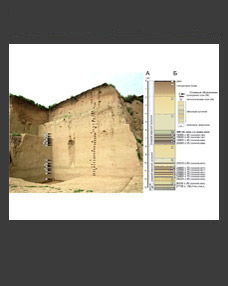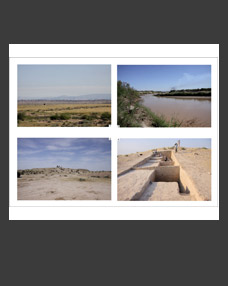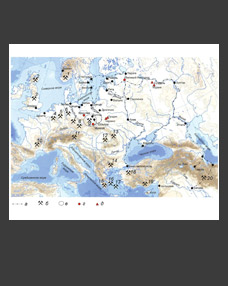Anastasiya L. Belitskayaa, #, Evgeny V. Popova, ###, Valery I. Silaevb, ##, Vasily N. Filippov b and Anton F. Khazovb, ####
aInstitute of Language, Literature and History FRC Komi SC UB RAS, Syktyvkar, Russia
bInstitute of Geology FRC Komi SC UB RAS, Syktyvkar, Russia
#E-mail: belitskaia522@yandex.ru
##E-mail: evpopovich@bk.ru
###E-mail: silaev@geo.komisc.ru
####E-mail: akhazov@geo.komisc.ru
Keywords: protective clothing, burial mound, European North-East, the Vychegda River basin, the Migration Period, Sasanian Iran, mineralogical analysis.
The article introduces first results of the research on an iron helmet found in 2022 at the Yuvanayag mound cemetery in the Vychegda River region, the Komi Republic. The mound cemetery belongs to the circle of the Veslyansky I type cemetery, which was left by migrants with a developed military culture. Its distinctive feature was the tradition of building mounds over graves. Those burial mounds are a reflection of the late Migration Period in the European North-East (5th–7th centuries AD). The found helmet of the Bandhelm type (after Ch. Miks’s classification) is a unique specimen for the region, which also had no analogues in the adjacent territories. Based on mineralogical and geochemical studies, the helmet is made of iron with micro-inclusions of native aluminum and lignite carbon matter. The helmet overlays are made of brass with inclusions of lead-copper-zinc alloys and copper. Its elongated shape and decoration with hemispherical brass overlays are close to the helmets of Sasanian Iran. Geographically, the closest analogy to the Yuvanayag find is the Bandhelm from the predatory excavations near the village of Tsaritsyno in Ryazan Region. Preliminary dating of the artefact from the Yuvanayag burial mound is the late 4th – 5th century AD.
DOI: 10.31857/S0869606324010129, EDN: ZVSVLH







